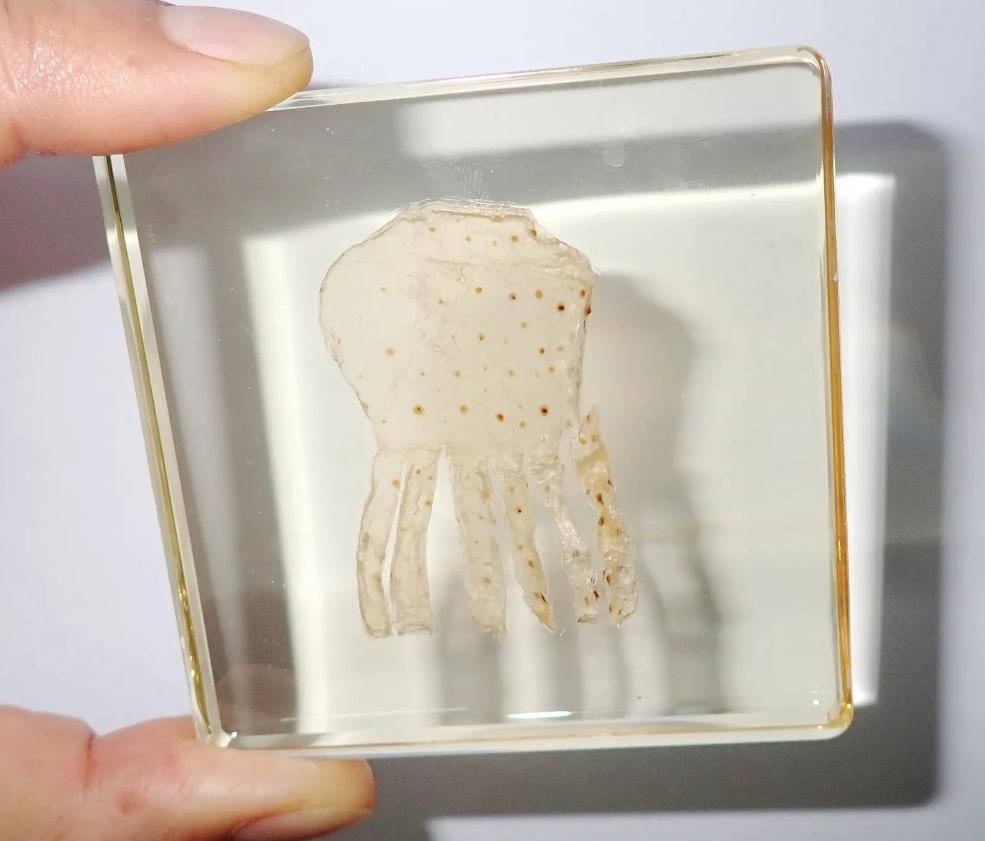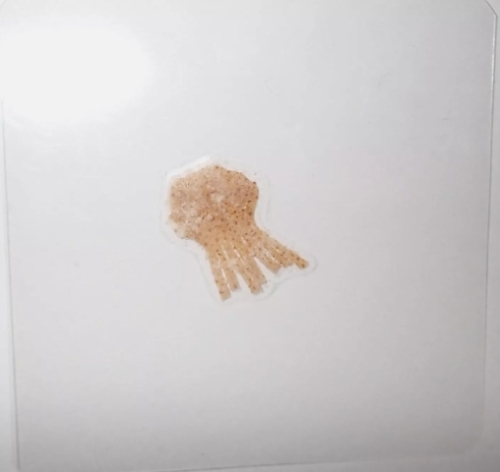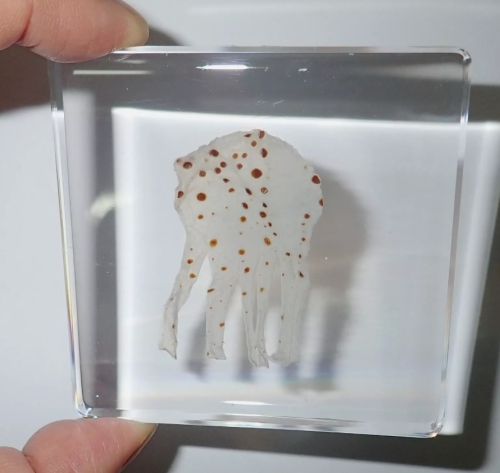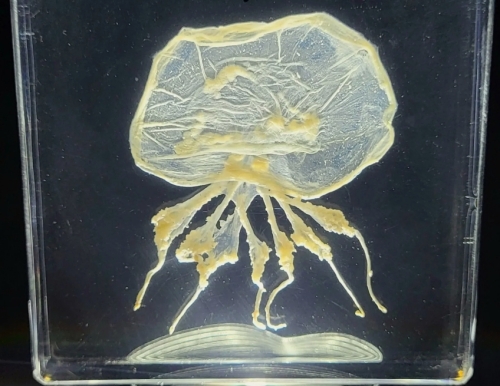Jellyfish, as an important part of Marine ecosystem, has a unique position in nature due to its unique form and survival mode. Jellyfish specimens, often able to display its exquisite structure and diverse morphological characteristics, attract the attention of countless researchers and enthusiasts.
The body structure of a jellyfish is very unique, consisting mainly of colloidal water, which usually accounts for more than 90% of its total weight. This makes the jellyfish appear very light in the water, almost like floating ghosts. Its umbrellelike body has tentacles at the base,which are covered with stinging cells that release toxins, which are used to catch prey and defend itself. In the specimen, you can clearly see the detailed structure of the tentacles and the transparent umbrella body,as if you can feel the posture of their light swimming in the water.
The way jellyfish reproduce is also quite complex, mainly through the way of floating larvae and sexual differentiation in the water. The specimens can show the different growth stages of jellyfish,from juveniles to adults,reflecting their unique biological characteristics. Under the irradiation of the light,the transparent jellyfish shows subtle color changes, highlighting its elegant beauty.
In addition, jellyfish play an important role in the ecosystem. They feed on plankton and become part of the food chain for other Marine life. By analyzing jellyfish specimens,it is possible to understand their role in Marine ecology and their interrelationship with the environment. The number of jellyfish is closely related to environmental factors,and excessive eutrophic water may lead to a large number of jellyfish,which will affect the health of the entire ecosystem.
Collecting and studying jellyfish specimens not only helps the scientific community to deeply understand the biological characteristics of this mysterious creature, but also provides valuable data for ecological conservation.
















